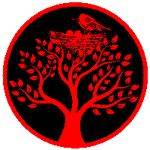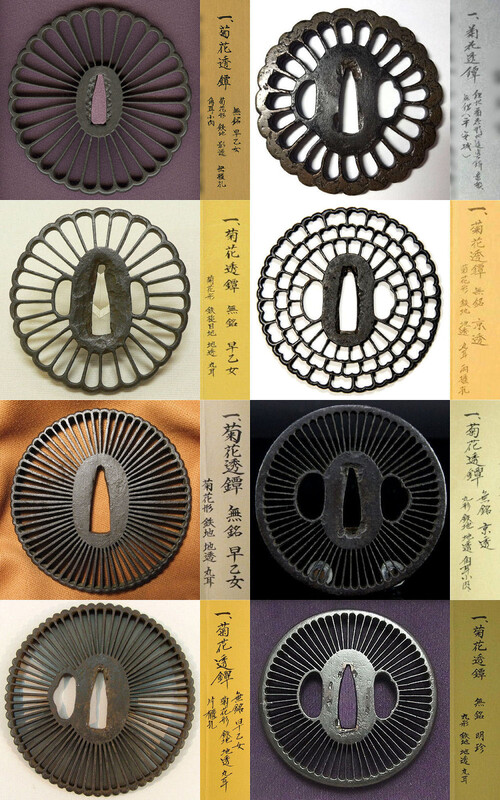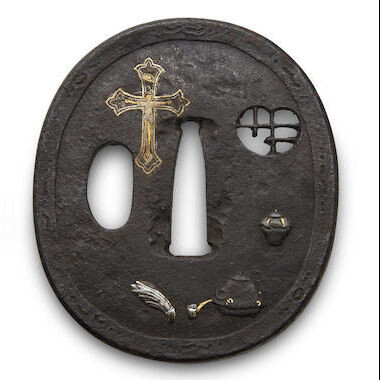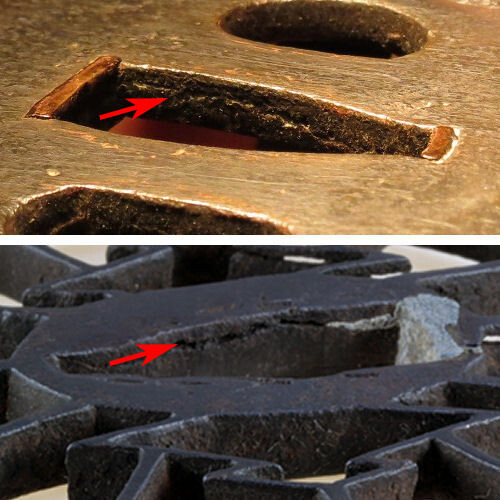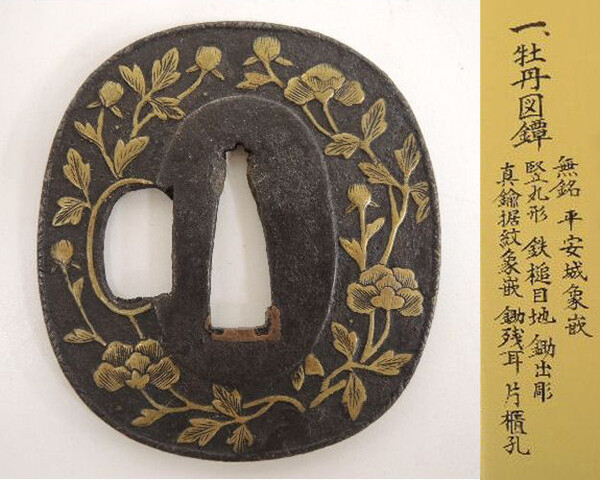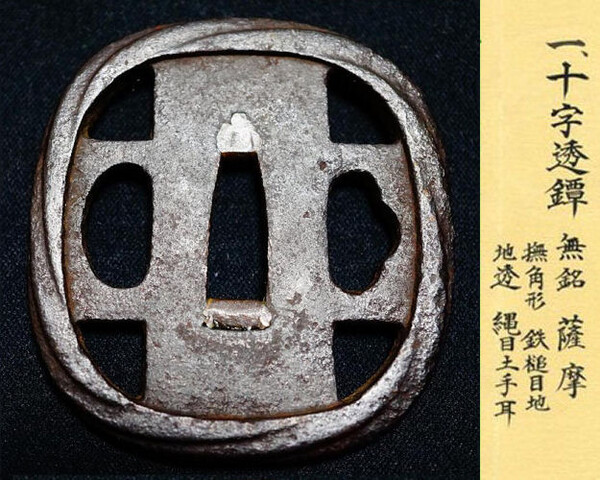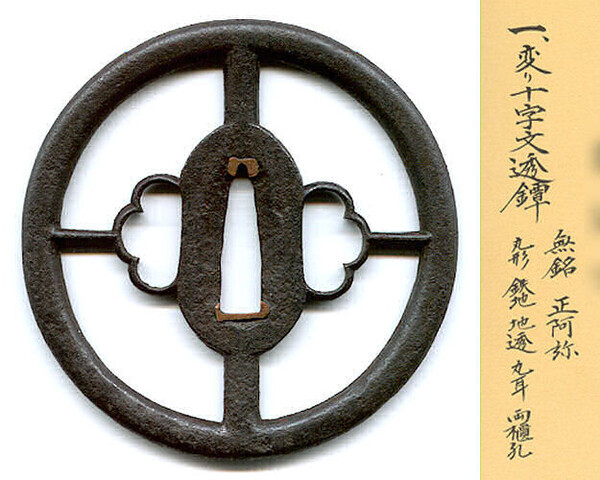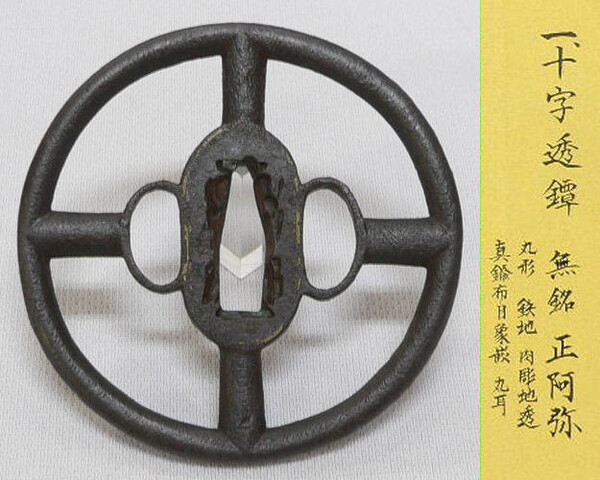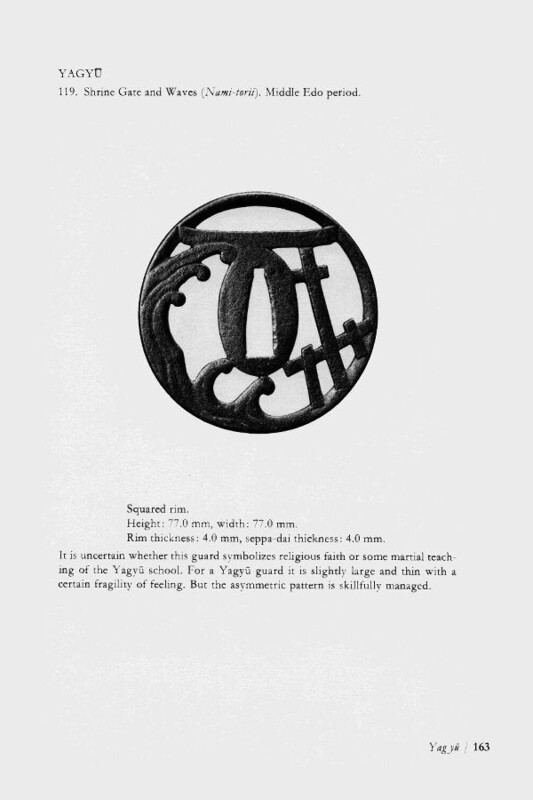-
Posts
762 -
Joined
-
Last visited
-
Days Won
4
Content Type
Profiles
Forums
Events
Store
Downloads
Gallery
Everything posted by MauroP
-
When it comes to judge art (and tsuba as well) nothing can be taken for granted. Here in the picture below I have collected some examples of plain kikka-gata sukashi tsuba; on the left 4 tsuba papered as Saotome, on the right tsuba attributed to Heianjō, Kyō-sukashi (2) and Myōchin. Bye, Mauro
-
Hi, Morita-san already gave you the right answer; see http://www.militaria.co.za/nmb/topic/18305-fuchi-kashira-match/ bye, Mauro
-
Gents, just for keeping on exercise our critical thinking I wish to propose a tsuba from Bonhams auction (https://www.bonhams.com/auctions/22248/lot/1187/). It has already been sold, so I'm not interfering with the market. Here we have an overt Christian symbol, but IMHO it's just forgery to sell better the tsuba... Bye, Mauro
-
Hi Ben, judging a tsuba from pictures is often misleading. Anyway I'm not fully convinced that what you have taken in the picture is a seam proving a casting piece. It could well be the result of the awasegitae (i.e. the last folding of an iron plate during forging). See here below an example from a papered Akasaka tsuba. Bye, Mauro
-
I think the subject depicted is Chinnan Sennin (see http://www.mfa.org/collections/object/tsuba-with-design-of-chinnan-sennin-and-dragon-11760). According to "Legend in Japanese art": "Once passing through a village in Sogo, he found the people praying for rain, whereupon he thrust his stick into a pool of dried mud in which he detected the presence of a dragon, and compelled the latter to open the cataracts of heaven upon the parched land." Bye, Mauro
-
Payment sent. Thank you. Mauro
-
Nice tsuba, but not Kaga (not plain hira-zōgan), just Heianjō-zōgan. The chevron-like decoration reminds early inlay works, but raised mimi and seppa-dai suggest me a late Edo piece. Just my not-so-educated opinion. Bye, Mauro
-
Here is a tsuba I just missed to win at a Yahoo Japan auction. The description in the old NBTHK certificate is still puzzling me: 樋彫鐔 - toi-bori tsuba (gutter-like carving tsuba?). Someone is able to confirm (or amend) my transcription? Thanks for reading. Mauro
-
Welcome, Enrico! So please let us see your tsuba. BTW, Markus is the author (among many others wonderful books) of a lovely little book called "Handbook of Sword Fittings related Terms", which I found one of the most useful at my early steps in the world of kodōgu (and it's really inexpensive). Bye, Mauro
-
I wish to commit for the eBook, I'll possibly consider a print copy later on. Mauro
-
Thank you Wayne, nice tsuba. I'm just a little more confused about the calling of Satsuma. Bye, Mauro
-
Hi Wayne, a shakudō tsuba decorated in sukidashi-bori sounds quite unusual for a typical Satsuma tsuba. Would you mind to post an image of the tsuba, I'm curious and could be educative as well. Bye, Mauro
-
Hi Peter, I'm pretty confident I have the correct answer. I enclose one of my record cards of NBTHK certified tsuba taken from the net. Unfortunately the original link no longer works. NBTHK - 3 - 03503.pdf Bye, Mauro
-
Should be the shape of a kite. Bye, Mauro
-
Hi Franco, I'm with Rivkin. In my opinion more probably a late Edo revival piece, possibly Myōchin school (or Shōami, of course). Bye, Mauro
-
Hi, that's just my try for the first 3 columns. The 4th column should be a date beginnig with Shōwa...., and the last one is obviously the signature 寒山誌 - Kanzan shirusu. Bye, Mauro
-
Hi Steven, that kind of tsuba could probably get a NBTHK paper as Kyō-Kanagushi. Nontheless they are obviously mass-produced, low level tōsogu. Similar items have been already extensively discussed here: http://www.militaria.co.za/nmb/topic/14025-next-best-thing-to-having-nbthk-papers/?hl=kyo-kanagushi Bye, Mauro
-
My best guess is also 春秋 - Shunjū (spring and autumn?) Mauro
-
PM sent for no. 20.
-
The birds usually associated with ginger sprouts are wild geese (karigane myōga zu - 雁金茗荷図). The sukashi in the second tsuba are called warabide - 蕨手 (the shape of unpan, a cloud-shaped gong, is a little different).. Bye, Mauro
-
Hi Oleg, the aesthetics of your second tsuba reminds me Futagoyama, Yamakichibei or Myōchin school. I suppose the most important issue in judging such kind of tsuba is the quality of iron, which is almost impossible from a picture. The sloppy, rounded appearance of nakago-ana make me a little suspicious, but who can say... Bye, Mauro
-
I've found another similar one, so a rare but not unique finding. Attribution Iyo-Shōami. (from: http://www.hyozaemon.jp/product/tsuba005/) Bye, Mauro
-
Two more Shōami tsuba and a Satsuma one (at least according to NBTHK kanteisho): http://www.jp-sword.com/files/tsuba/cross.html http://www.jauce.com/auction/p495785562 http://www.kusanaginosya.com/SHOP/23.html Bye, Mauro
-
Hi Mark, after all Yagyū tsuba are not famous for their high quality of iron, so Yagyū school can just be the right answer. From Sasano: Bye, Mauro


